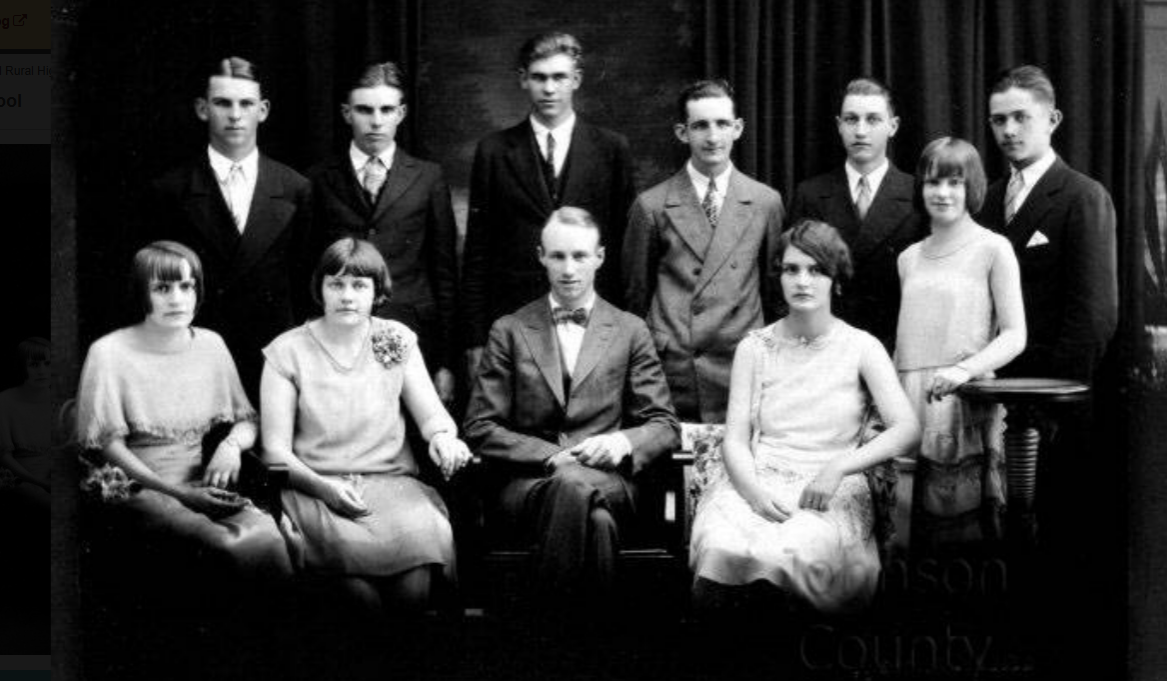
The Blue Valley School District is one of the most sought-after school districts in the Kansas City metro area. The formerly rural area takes its name from the Blue River that flows between the unincorporated towns of Stanley and Stilwell. What originated as a combination of the Oxford, Stanley, and Stilwell communities has grown to cover 91 square miles in Southeast Johnson County with 35 schools that educate roughly 23,000 students every year.

Blue Valley School District was officially formed in 1965 as Southeast Johnson County USD #229, later renamed Blue Valley USD in 1976. However, the first school in the area was established shortly after the founding of Johnson County. Residents built a one room schoolhouse named Stanley Elementary School in 1868 near present day 151st Street and Metcalf Avenue. It didn’t take long for the area to show the roots of later expansion when they added a second room in 1871. Many schoolhouses dotted the landscape in the 1880s as settlers in this area wanted a school every two miles to ensure their children had easy access to an education.
Beginning in 1874, Kansas required all children aged 8-14 to attend school at least some of the year. As it became more of a priority to send children beyond eighth grade, residents built a high school in Stanley in 1919. This high school served the area until it merged with Stilwell High School to form the new Blue Valley High School in 1965.

The new Blue Valley High School opened in 1970, between Stanley and Stilwell at 6001 W 159th Street and housed both a junior and senior high school. That first year, they had 573 students enrolled. The growth of the area is apparent in school enrollment numbers. By 1980 almost 3,000 students were enrolled and in 1993 there were 11,000. Population boomed through the 1990s and by 2004 19,000 students were enrolled. Expansion has slowed, but the population is still growing as today the district has around 23,000 students spread between six high schools, nine middle schools, and 21 elementary schools.
Creating a unified Blue Valley was among the first priorities for the new teachers and administrators. Until the new high school could be built, the Stanley High School was used for the new school, much to the chagrin of the Stilwell students. Former teacher and boys’ basketball coach Rick Taylor remembers his first year coaching at Blue Valley, “My first basketball practice, I had 15 kids from Stilwell at one end of the court and 12 from Stanley at the other end. I had to make one team out of them. It took about 3 years.” The corn stalks in the new Blue Valley logo seemed especially appropriate as former student Bill Lowe remembers practicing football in a cornfield when the school’s football field was too muddy, though the official reasoning pointed to honoring the rural roots of the area. Blue Valley’s first superintendent Jim March decided the colors and mascot should match his alma mater of the University of Missouri so Blue Valley High School became the black and gold tigers.

The 1980s ushered in the transition of Blue Valley from a rural district to a suburban one. In 1986 the district had grown enough it was time to build another high school. Blue Valley North High School was built north of the original high school. The student body that had once been divided between Stanley and Stilwell loyalties now rebelled against the split between Blue Valley High and Blue Valley North. Former English teacher and assistant principal Jim Payne remembers, “The juniors at the high school were not pleased about being forced to separate so they staged a protest and marched from Blue Valley High down to the district offices. As a means of building identity, the school handed out t-shirts the day before the final day of school. The idea was that you would know who was leaving and who was staying. If you were going to Blue Valley North, you got a gray/blue shirt with a mustang. If you were staying at Blue Valley High, you got a bright gold/black shirt with a tiger. On the following day, kids showed up with all kinds of creative responses. Some had split the shirt in two and had a friend to the same. So they showed up with gray/blue on the front and gold/black on the back or vice versa. Some did it horizontally (gray/blue top and gold/black from the chest down). Some had ripped it into thin shreds and wore a shredded shirt. Some had written on it in magic marker.”
The original settlers of the Blue Valley area could scarcely imagine the population growth seen over the past 150 years. From 1965, Blue Valley School District has added a new school or building on at an average of every two years, the most recent being Wolf Springs Elementary in 2017. The community has shown its continuous support for the school district by passing all but one bond issue presented to voters. In addition to the traditional schools, the Blue Valley School District includes an educational foundation, an alternative high school, a dedicated special education program, and a dedicated professional development program. Blue Valley continues to provide excellence in education with three superintendents named Kansas Superintendent of the Year and two teachers named Kansas Teacher of the Year.







